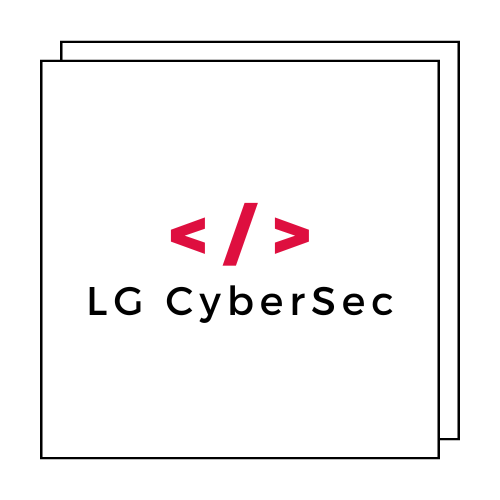In a devastating blow to UK national security, Russian hackers have successfully infiltrated eight Ministry of Defence (MoD) bases, stealing hundreds of sensitive files and posting them on the dark web. This ‘catastrophic’ cyber attack serves as a stark reminder that no organisation, regardless of size or security budget, is immune to sophisticated cybersecurity threats.
For small and medium-sized businesses (SMBs) watching this unfold, the implications are clear: if cybercriminals can breach one of the world’s most security-conscious institutions, your business could easily be next. In 2024, 94% of SMBs faced at least one cyberattack, making cybersecurity not just a luxury but a business survival imperative.
This unprecedented breach offers valuable lessons for businesses of all sizes. Let’s examine what happened, why it matters to your organisation, and most importantly, how you can protect your business from similar devastating attacks.
The Scale and Impact of the MoD Cyber Attack
The Russian cyber attack targeted multiple UK military installations, including RAF and Royal Navy bases. According to reports, cybercriminals successfully exfiltrated hundreds of classified documents containing sensitive operational details, personnel information, and strategic intelligence.
What makes this attack particularly concerning is the attackers’ decision to publish the stolen data on the dark web. This isn’t just espionage – it’s a deliberate act of information warfare designed to embarrass the UK government and potentially compromise ongoing military operations.
The attack methodology likely involved several sophisticated techniques commonly seen in Advanced Persistent Threat (APT) campaigns:
- Spear-phishing attacks targeting specific personnel
- Credential harvesting through social engineering
- Lateral movement across network systems
- Data exfiltration over extended periods
For businesses, this attack pattern should sound familiar – it’s the same playbook used against countless SMBs every day.
Why This Attack Should Concern Every Business Owner
You might think, “My small business isn’t a target like the MoD.” However, this mindset is exactly what makes SMBs vulnerable. Here’s why this attack is relevant to your business:
Cybercriminals Use Similar Attack Vectors
The techniques used against the MoD – phishing emails, credential theft, and network infiltration – are the same methods cybercriminals use against businesses daily. In fact, Verizon’s 2024 Data Breach Investigations Report shows that 68% of breaches involved human error, primarily through phishing attacks.
SMBs Are High-Value Targets
Small businesses often have weaker security measures than large corporations but still possess valuable data:
- Customer personal information and payment details
- Financial records and business intelligence
- Employee personal data
- Intellectual property and trade secrets
The Dark Web Economy Thrives on Business Data
Just as the Russian hackers posted MoD files on the dark web, stolen business data regularly appears on these platforms. Customer databases can sell for thousands of dollars, while business banking credentials command premium prices among cybercriminals.
Research indicates that cybercrime damages reached $10.5 trillion globally in 2024, with SMBs representing a significant portion of these losses.
Common Attack Methods: From Government to Business
The MoD attack showcases several attack methodologies that businesses frequently encounter. Understanding these methods is crucial for developing effective defences.
Social Engineering and Phishing
Most sophisticated attacks begin with social engineering. Attackers research their targets through social media, company websites, and public records to craft convincing phishing emails. These emails might:
- Impersonate trusted vendors or partners
- Create urgent scenarios requiring immediate action
- Include malicious attachments or links
- Request credential verification
Credential Compromise
Once attackers obtain legitimate credentials, they can access systems without triggering security alerts. This is why 78% of SMBs fear a breach could put them out of business – the damage often occurs silently over months.
Network Infiltration and Lateral Movement
After gaining initial access, sophisticated attackers move laterally through networks, escalating privileges and accessing increasingly sensitive systems. They often remain undetected for an average of 16 days before detection.
At LG CyberSec, we’ve seen similar attack patterns target local businesses, highlighting the universal nature of these threats.
Protecting Your Business: Lessons from the MoD Attack
While you can’t prevent all cyber attacks, you can significantly reduce your risk by implementing comprehensive security measures. Here are the critical protections every business needs:
Multi-Factor Authentication (MFA)
MFA adds crucial security layers beyond passwords. Even if attackers steal credentials, they can’t access systems without the additional authentication factor. Implement MFA on all business accounts, especially:
- Email systems
- Cloud storage platforms
- Financial applications
- Customer databases
Employee Security Training
Since human error causes most breaches, regular security training is essential. Train employees to:
- Identify phishing emails and suspicious links
- Use strong, unique passwords
- Report security incidents immediately
- Follow data handling procedures
Network Security Monitoring
Implement continuous monitoring to detect unusual network activity. This includes:
- Intrusion detection systems
- Log monitoring and analysis
- Endpoint detection and response (EDR)
- Network traffic analysis
Data Backup and Recovery
Regular, secure backups ensure business continuity even after successful attacks. Follow the 3-2-1 backup rule:
- 3 copies of important data
- 2 different storage types
- 1 offsite backup location
Dark Web Monitoring: Essential Protection for Modern Businesses
The decision to publish MoD files on the dark web highlights why businesses need dark web monitoring services. These platforms track whether your business data appears on dark web marketplaces, enabling rapid response to potential breaches.
What Dark Web Monitoring Covers
- Company email addresses and domains
- Employee credentials
- Customer information
- Financial data
- Intellectual property
Benefits of Proactive Monitoring
Early detection allows businesses to:
- Reset compromised credentials before attackers use them
- Alert affected customers about potential data exposure
- Implement additional security measures quickly
- Reduce breach impact through rapid response
Building a Cyber-Resilient Business Culture
The MoD attack demonstrates that cybersecurity isn’t just about technology – it’s about creating a security-conscious culture throughout your organisation.
Leadership Commitment
Business owners and managers must demonstrate cybersecurity commitment by:
- Allocating adequate security budgets
- Participating in security training
- Establishing clear security policies
- Supporting employee security initiatives
Regular Security Assessments
Conduct quarterly security assessments to identify vulnerabilities:
- Vulnerability scans of network systems
- Penetration testing of critical applications
- Security policy reviews
- Employee security awareness assessments
Incident Response Planning
Develop and regularly test incident response plans that outline:
- Immediate response procedures
- Communication protocols
- Data recovery processes
- Legal and regulatory compliance steps
The Business Case for Cybersecurity Investment
Some business owners view cybersecurity as an expensive necessity rather than a strategic investment. However, the costs of inadequate security far exceed prevention expenses.
Average Breach Costs
According to IBM’s 2024 Cost of a Data Breach Report, the average cost of a data breach for SMBs is £3.6 million, including:
- Direct financial losses
- Regulatory fines and penalties
- Legal costs and settlements
- Business disruption and downtime
- Reputation damage and customer loss
ROI of Security Investment
Comprehensive cybersecurity measures typically cost a fraction of potential breach damages. Investment areas with high ROI include:
- Employee training programs (reduces human error by 70%)
- Multi-factor authentication (prevents 99.9% of account takeovers)
- Regular security assessments (identify vulnerabilities before exploitation)
- Backup and recovery systems (ensure business continuity)
The Russian attack on UK MoD bases serves as a powerful reminder that cybersecurity threats are real, sophisticated, and constantly evolving. While your business may not be protecting national secrets, the data you hold – customer information, financial records, and business intelligence – is equally valuable to cybercriminals.
The key lessons from this attack are clear: no organisation is too small to be targeted, attackers use similar methods across all sectors, and proactive security measures are essential for business survival.
Don’t wait for a catastrophic breach to take cybersecurity seriously. Implement comprehensive security measures now, train your employees regularly, and consider partnering with professional cybersecurity experts who understand the unique challenges facing SMBs.
Your business’s future depends on the security decisions you make today. In an era where cyber attacks can destroy businesses overnight, cybersecurity isn’t just an IT issue – it’s a business survival strategy that requires immediate attention and ongoing commitment.

